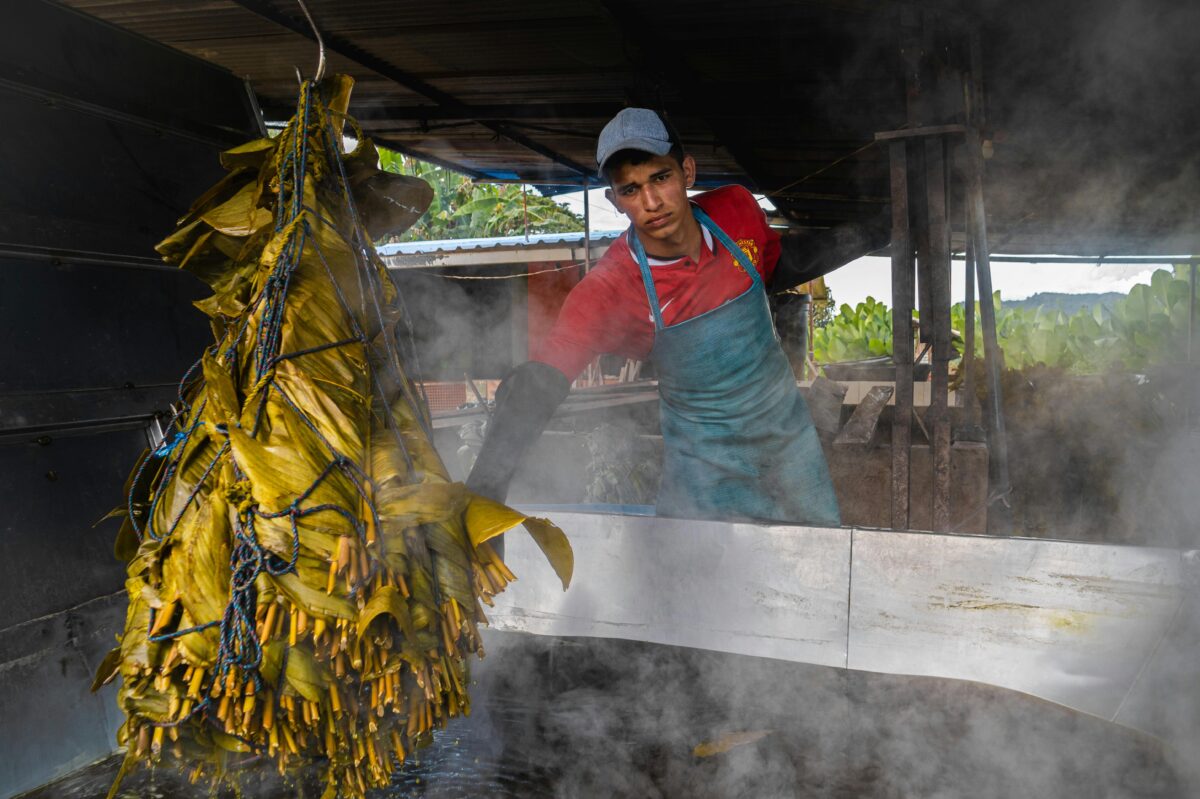Wander With Wonder – Discovering Wow Moments Around the World or Across the Street
Taste Colombia’s soul through unforgettable Colombian dishes—street markets, festivals, and coastal kitchens where flavor tells a story.
Close your eyes, you’re in an Andean plaza, the dawn air cool against your skin. A vendor cracks open kernels of corn on a metal pan, and the scent – warm, tender, just a touch smoky – drifts through the crisp air. Below, the mountain hum is low and steady, like a giant breathing beneath your feet.
Soon, you’ll find fragrant crab bubbling in a clay pot, where coconut and salt taste of the sea. And there’s something deeper, an unexpected comfort in a flavor so simple it stays with you long after you’ve left the place it came from.
Ready for it?
Hormigas Culonas – Santander
Imagine biting into salty, smoky popcorn with a nutty finish that surprises your taste buds. That’s hormigas culonas, a centuries-old delicacy from Santander. These queen ants are harvested during the rainy season (March–June), roasted with salt, and enjoyed like gourmet popcorn.
Where to go: Bucaramanga markets or charming towns like Barichara and San Gil. Ask street vendors or artisans for a taste, and try them with a local beer at sunset.
Mojojoy (Brocheta de Suri) – Colombian Amazon
Deep in the Amazon, mojojoy, also called suri, is a creamy, fatty weevil larva considered a delicacy. Grilled on skewers, fried, or eaten raw, its flavor evokes hazelnut or butter.
Where to go: Head to Leticia, the capital of Colombia’s Amazonas. Wander through the Plaza Mayor and ask indigenous vendors to try a brocheta de suri while watching macaws descend in the twilight.
Arroz Atollado con Jaibas – Guapi, Pacific Coast
Think creamy risotto with crab and coconut milk: that’s arroz atollado con jaibas, a lush dish born in Guapi on the Pacific coast. Crab-infused broth and coconut meld into a rice prepared slowly and lovingly.
Where to go: Visit seaside eateries in Guapi, Cauca, where chefs simmer rice with local crab meat and coconut in open kitchens. Pair it with ocean views and rhythms of the Afro-Colombian culture.
Lechona Tolimense – Tolima
In Tolima, lechona isn’t just food, it’s a festival centerpiece. Imagine a whole pig stuffed with rice, peas, onions, and spices, slow-roasted until the skin crisps into golden perfection.
Where to go: Make your way to Ibagué or Espinal, especially around June 29 (National Lechona Day), when festivals celebrate local pride and flavor. Try it with arepas and a side of insulso, a regional natilla-like treat.
Pepitoria – Santander Region
Pepitoria is rich, traditional, and unapologetically bold, a hearty mash of goat entrails, blood, rice, cheese, and eggs. It’s an intensely flavorful glue that highlights regional ingenuity.
Where to go: Visit rustic fondas in Barichara or Girón, where locals will serve up pepitoria alongside goat dishes, no frills, just pure, deep flavor.
Gelatina de Pata (“Hoof Jelly”) – Cali, Valle del Cauca
In Cali, sweet meets unusual. Gelatina de pata is a sugary jelly made by cooking a beef hoof with panela, milk, vanilla, and cinnamon. It wobbles like pudding but tastes comforting and nostalgic.
Where to go: Track down street candy stalls or market vendors in Cali, perfect after a salsa show or while strolling through the historic town center.
Criadilla Soup (“Calf-Testicle Soup”) – Manizales
Call it what you will, this high-altitude classic is everything rugged and warming. Criadilla soup, made from calf testicles, is believed to cure colds, cure hangovers, or just warm your soul.
Where to go: Order it at a traditional restaurant in Manizales, nestled in the Coffee Cultural Landscape. Enjoy it before trekking to the cathedral or heading up Nevado del Ruiz.
A Sample Itinerary To Follow:
● Start in Bucaramanga/Barichara for ants and pepitoria.
● Fly south to Ibagué for festival-style lechona.
● Venture west: coastal Guapi for crab arroz atollado.
● Brush through the Amazon: Leticia for mojojoy under the canopy.
● Move to Cali for a sweet Gelatina de pata.
● Ascend to Manizales: sample criadilla soup with coffee-scented mountain air.
As you embark on this culinary journey through Colombia, it’s essential to ensure your travel documentation is in order. Before your trip, make sure to complete the Colombian Check-Mig form, which is required for entry into and exit from Colombia.
Each unique dish in Colombia magically transports you to its roots. Photo by Antonio Tique courtesy of Pexels
Why These Colombian Dishes Matter
Each dish transports you to its roots
Regional authenticity – you can’t replicate them elsewhere
Cultural connection – to ancestral practices, indigenous traditions, and Spanish
adaptations
Actionable – you know where to go, what to say, and what to taste
Adventure – they challenge taste buds and broaden the travel story you bring home
Conclusion
Colombia’s food map is waiting to surprise you, ants in the mountains, skewers in the jungle, creamy rice by the sea, and wobbling jelly in the city square. Colombia’s cuisine is a tapestry woven from its diverse regions, each dish telling a story of its people and history.
From the hearty bandeja paisa of Antioquia to the comforting ajiaco of Bogotá, every meal offers a glimpse into the country’s soul. The coastal flavors of arroz atollado and the rich sancocho from the Cauca Valley showcase the abundance of Colombia’s landscapes. These dishes are more than just food; they are a celebration of community, tradition, and the enduring spirit of South America and Colombia in particular.
.
The post Beyond Arepas: 7 Colombian Dishes You’ve Never Heard of But Should Travel For appeared first on Wander With Wonder.
